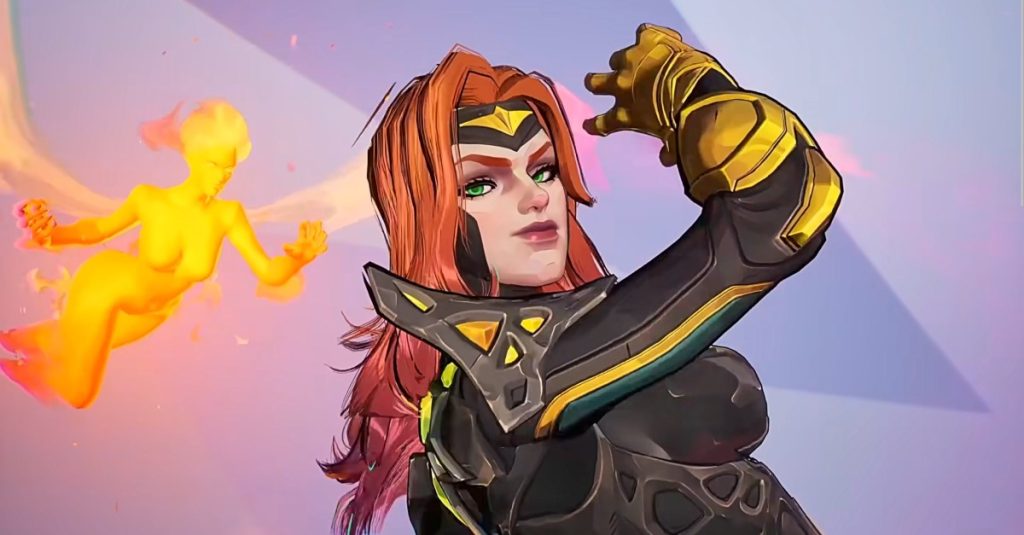The arrival of Phoenix in Marvel Rivals has reignited interest in NetEase’s hero shooter, offering players a fresh experience that might draw some attention away from titles like Overwatch 2. The anticipation surrounding Phoenix stems not just from her character’s backstory but also from her unique movement mechanics, which promise to enhance gameplay. Unlike previous characters in the game, who tended to move sluggishly, Phoenix’s fluidity stands out and is a welcome change for players who have been yearning for more dynamic combat.
Movement and Gameplay Mechanics
Since its launch in December 2024, players have voiced their concerns about the slow movement speeds in Marvel Rivals. Many fans took to Reddit to express their frustrations, with one user describing the experience as akin to “walking in slow motion.” The sentiments echo a broader dissatisfaction with the character movement, which many perceived as considerably slower compared to its competitors. The first-person perspective in games like Overwatch creates a more dynamic feel, leading players to believe that the pace is much quicker, despite the actual movement rates being comparable. In Rivals, this slow movement led to a gradual decline in player engagement as the frustration with pacing grew.
However, with the introduction of Phoenix, the gameplay dynamics seem to have shifted. Testing her movement mechanics in the practice arena against characters from both Marvel Rivals and Overwatch 2 revealed that while Rivals characters do have a slower movement ratio, the distance they cover remains relatively similar. When measuring movement speed, it was found that characters in Rivals take about half a stride longer to travel five meters compared to their Overwatch 2 counterparts. This discrepancy, however, was mitigated by the fact that five meters in Rivals translates to approximately 11.5 inches, whereas in Overwatch 2, the same measurement is nearly 10 inches.
The Impact of Phoenix
The question of why these movement mechanics matter is crucial; it shifts the narrative around the gameplay experience. The key takeaway is that characters in Marvel Rivals move around the battlefield almost as fast, if not faster, than those in Overwatch 2. The difference lies in the style of movement. Characters in Rivals have a more graceful, albeit slower, loping stride reminiscent of a dramatic performance. Yet, this can lead to a disconnection during high-energy scenarios, as attacks are often punctuated with lengthy animations, making battles feel less engaging and more like a choreographed dance rather than a frantic brawl.
Phoenix marks a notable departure from this norm. Her combat animations resonate with urgency and flair, contrasting sharply with the prior characters. When she engages in battle, her attacks emit a sharp whoosh, followed by explosive damage on consecutive hits. This immediate feedback creates a more thrilling gameplay loop, enhancing the overall player experience. She zips around the battlefield in her flaming bird form, utilizing mobility skills that provide rapid relocation capabilities without lengthy cooldowns. This kind of fast-paced action injects a new energy into the game, potentially drawing in players who may have grown disinterested due to the pacing issues previously encountered.
Community Engagement and Response
Community response to Phoenix has been overwhelmingly positive, with players praising her unique kit and the invigorated sense of gameplay she introduces. According to a recent survey by Statista, over 70% of players expressed that they felt more engaged with Phoenix compared to other characters, citing her gameplay fluidity and stylistic flair as key factors. This shift in player sentiment is critical for NetEase as they strive to retain their player base and attract newcomers.
Overall, the introduction of Phoenix signifies a turning point for Marvel Rivals. By merging function with style, NetEase has crafted a character who not only performs well on the battlefield but also enhances the aesthetic experience of gameplay. This development has implications for future character design within the game, paving the way for an evolution in how movement and combat are perceived in hero shooters.
As players continue to explore Phoenix’s capabilities, her impact on the overall Marvel Rivals experience will likely inform the game’s future updates and character introductions. For now, she stands as a beacon of what can happen when gameplay mechanics are aligned with player expectations, breathing new life into a genre that thrives on dynamic interactions and engaging combat sequences.

